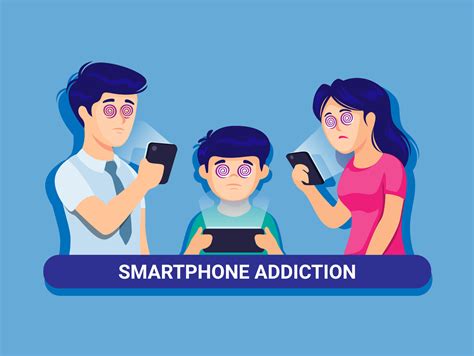In the current digital age, smartphones have permeated every facet of our lives, including children as young as six. While these devices offer unprecedented connectivity and learning tools, they are also blamed for various societal woes, particularly concerning mental health and social development in children. Recently, discussions around unplugging kids from smartphones have gained traction, raising the question of whether eliminating screen time can significantly enhance a child’s well-being. Many argue passionately for both sides of this debate, highlighting the multifaceted nature of this issue.
The argument for reducing digital screen time among children often emphasizes improved mental health outcomes. Supporters claim that children disconnected from the constant barrage of notifications, likes, and peer validations on social media platforms show marked improvements in anxiety, depression, and overall mood. This perspective holds water, with research indicating a correlation between high social media usage and deteriorating mental health. For instance, taking away smartphones has reportedly made some children more sociable, engaged in physical activities, and less prone to digital distractions, thereby fostering a healthier attitude towards life.
On the flip side, critics argue that blaming smartphones exclusively for children’s mental health issues is a reductive approach. They point out that other factors, such as familial dynamics, socio-economic conditions, and school environments, play crucial roles. Indeed, studies show that children from stable families or environments supportive of emotional growth may utilize their devices without adverse effects. Moreover, the advent of smartphones has given children tools for educational enrichment and navigation of digital literacy—skills imperative in today’s technologically driven world.
The role of parents in managing screen time is crucial yet challenging. Some parents adopt stringent measures, removing devices entirely to break the cycle of digital addiction. This approach is not without merit; as documented cases suggest, children often exhibit positive behavioral changes when detached from their screens. However, this method requires parental involvement and awareness, emphasizing not only time limits but also content regulation. Tools such as Apple’s Family Link and Google’s parental controls offer solutions but these measures demand consistent oversight.
Balancing screen time with real-world interactions is another critical factor highlighted in these discussions. Many parents find that while completely eliminating smartphones is impractical, regulating their use can help. Strategies include limiting hours, ensuring academic and physical activities fill digital voids, and engaging children in meaningful offline activities. By doing so, parents can promote a balanced lifestyle without vilifying technology outright. After all, digital communication remains an integral part of contemporary social frameworks.
Critics of smartphone bans argue that in some cases, the negative impact attributed to phones might be overemphasized. The digital realm can act as a sanctuary for shy or introverted children, enabling them to find social connections and communities where they feel accepted. Thus, moderation rather than outright prohibition could be a more pragmatic and sustainable strategy. Introducing controlled social media usage, complemented with discussions on digital ethics and responsible online behavior, can arm children to navigate the cyber world effectively.
The conversation around screens and kids is also deeply entangled with societal norms and economic realities. Tech giants have vested interests in keeping users, including young ones, engaged and monetized. Therefore, addressing this issue might also require regulatory frameworks to mitigate the overwhelming influence of social media algorithms explicitly designed to capture attention. Collaboration between policymakers, educators, developers, and parents is necessary to create healthier platforms and user experiences.
Ultimately, achieving a balanced approach to digital media in children’s lives means recognizing smartphones as both tools and potential sources of distraction. Educators and parents must foster environments where children can enjoy the benefits of technology while developing robust offline skills and relationships. The discussion, thus, is not about vilifying technology but about creating frameworks that empower future generations to use digital tools wisely and responsibly.


Leave a Reply